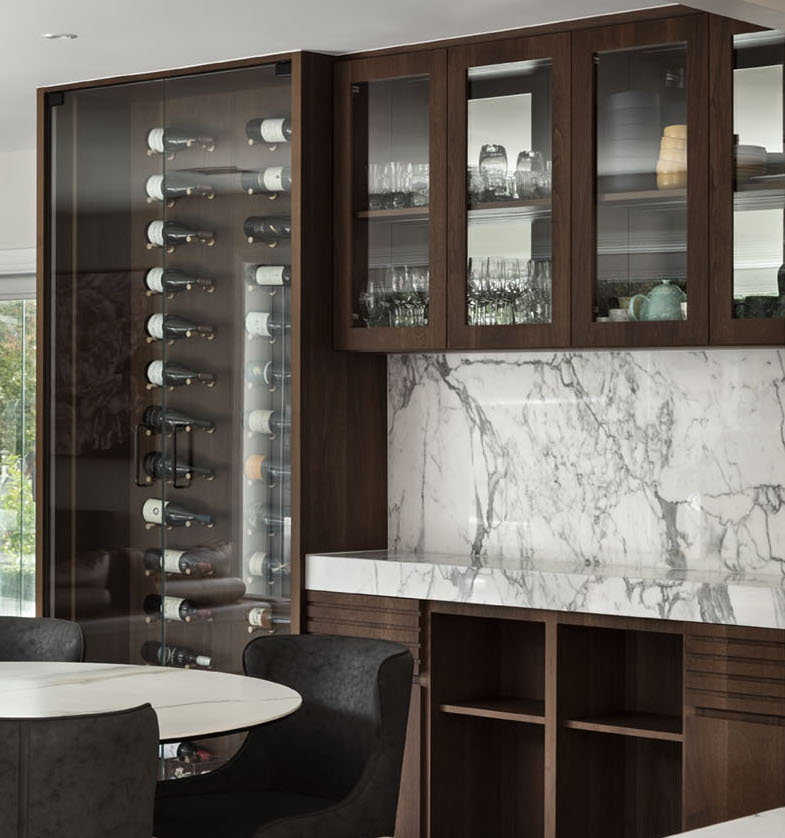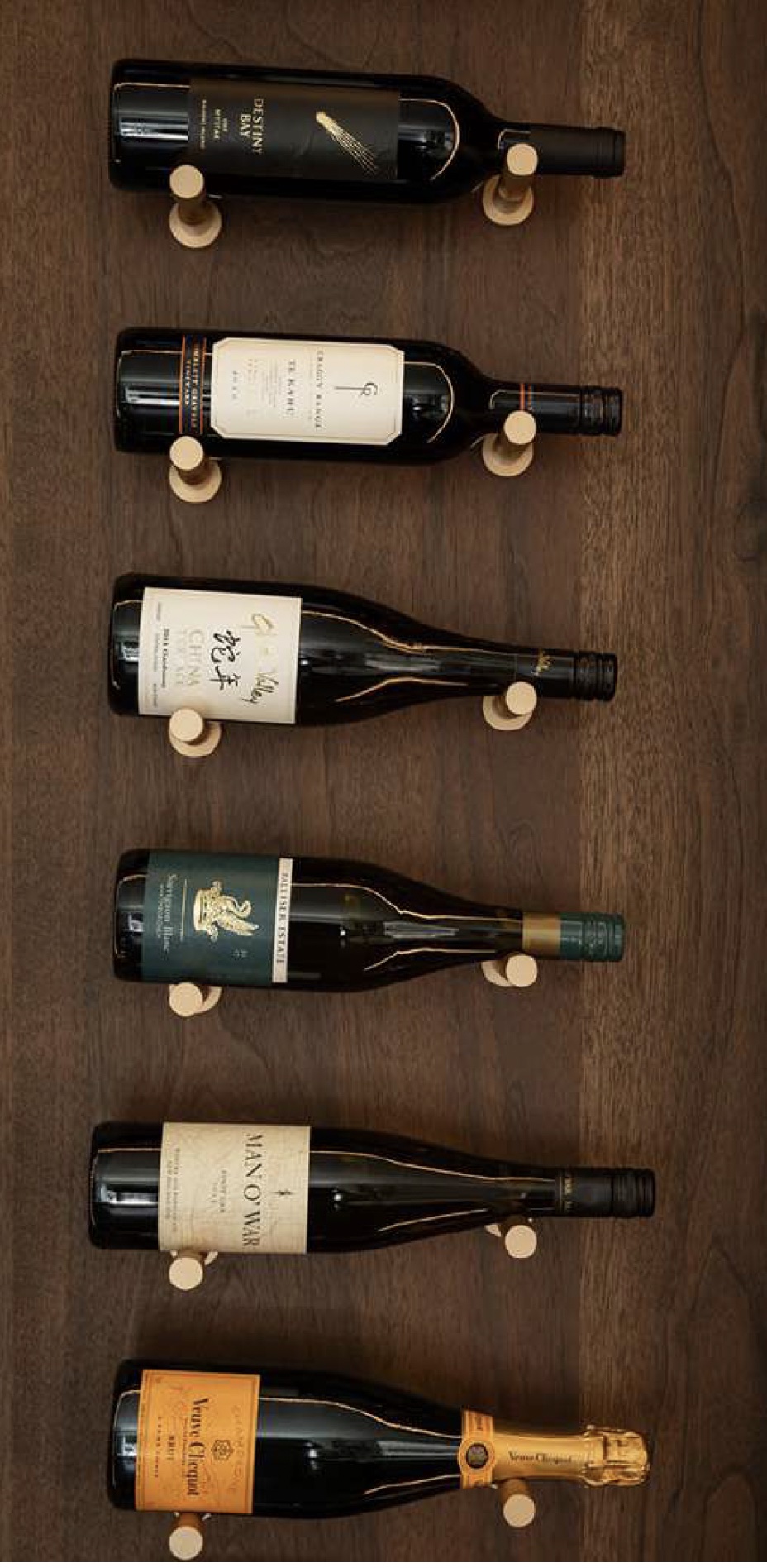Wine Cellar Design
For the discerning wine enthusiast, a private wine cellar is more than just bottle storage, it is about improving wine quality and value through proper aging, celebrating your passion for fine wine, and creating a dedicated atmospheric space for sharing that passion with others. In new architectural homes, the opportunity arises to seamlessly integrate a custom wine cellar that is both functional, beautiful and adds value to your home.
1. Mastering the Environment: Humidity and Temperature Control
The cornerstone of any successful wine cellar is precise environmental control. Wine is a living entity, and consistent temperature and humidity are vital for its proper aging and preservation.
-
Temperature: Aim for a stable temperature between 12°C and 14°C. Fluctuations are detrimental, so for the perfect wine cellar invest in a high-quality, dedicated cellar cooling system, and also use mass to your advantage (solid walls, underground locations) to provide thermal stability. Remember to insulate the door as well. We work with experienced mechanical engineers who are able to specify the right mechancial equipment for your cellar size and design.
- Red wines and natural wines are typically happier at 14 degrees, while whites prefer 8-12 degrees and champagnes prefer cooler storage at 5-8 degrees. For greater precision in your storage of the different types, you can achieve this with a multizone climate control, or alternatively invest in glazed cabinets within the cellar that are designed for the different temperature requirements.
-
Humidity: Maintain humidity levels between 55% and 75%. This prevents corks from drying out and allowing air into the bottles, which can spoil the wine. An air conditioner, humidifier or dehumidifier may be necessary to achieve this balance. Good seals on doors help maintain the temperature and humidity within the room.
-
Vibration and Light: Minimize vibration, as it can disturb sediment and accelerate aging. Keep your cellar away from heavy foot traffic or machinery. Direct sunlight and even fluorescent light can be harmful to a wines development, so thoughtful lighting design is crucial and protecting the bottles from natural light during storage essential.
2. Selecting Materials for Enduring Elegance
The materials you choose define the aesthetic and long-term performance of your cellar. For a luxury feel, focus on quality natural elements.
-
Flooring: Natural stone offers a timeless, sophisticated look while providing excellent thermal mass to help maintain temperature. Other popular choices include slate, brick, or even sealed concrete.
-
Wine Racks: Modern contemporary wine racks, often crafted from metal or beautiful timber, provide sleek lines and efficient storage. Consider a mix of individual bottle storage, case bins, and display racks for showcasing special bottles. Bottles with corks should be stored on their sides, screw top wines have more options for storage.
-
Ceilings and Walls: Timber ceilings add warmth and a touch of luxury. Insulated walls are essential for thermal stability. Consider natural wood panels, stone veneers, or even specialized plaster finishes for visual appeal.
3. Ambiance Lighting: Setting the Mood
Lighting in a wine cellar serves dual purposes: functionality and atmosphere. Concealed cove lighting is a superb choice for creating that beautiful, moody ambiance.
-
Soft and Indirect: Avoid harsh overhead lights. Instead, opt for soft, indirect lighting that highlights the architecture and the wine bottles without exposing them to damaging UV rays or heat. Other than when you visit them, the wines should be left in darkness.
-
LED Technology: LED lights are ideal. They emit very little heat and are energy-efficient, making them perfect for a controlled environment.
-
Dimmers: Install dimmers to allow for adjustable brightness, letting you set the perfect mood for a quiet tasting or a lively gathering. Accent lighting within display racks can draw attention to prized vintages.
4. Strategic Storage for Diverse Collections
A luxury cellar should be designed to accommodate various wine types and bottle sizes, ensuring optimal storage for each.
-
Bordeaux and Burgundy Bottles: Most racks are designed for standard 750ml bottles, but ensure you have sections for larger formats.
-
Magnums and Large Formats: Include dedicated spaces for magnums and other oversized bottles, which are often prized for their aging potential.
-
Sparkling Wine: These bottles are typically wider at the base, so ensure some racks can accommodate their unique shape.
-
Case Storage: For wines purchased by the case for long-term aging, integrated bins or shelves for original wooden cases are a practical and attractive feature.
- Barrel Storage: Wine barrels are almost always stored horizontally (on their sides), resting on their bilge (the widest part). This position ensures the wine is in constant contact with the bung (stopper) hole and the interior of the staves, keeping the wood fully swollen and sealed. Storing a full barrel of wine requires regular attention, often more so than storing bottled wine and the spaces should be designed to facilitate regular monitoring and care of the barrels.
- Spirits: Wine cellars are optimized for the long-term aging of wine, which is a delicate, living product. Spirits, being already distilled and higher in alcohol, are more stable and less prone to spoilage, but they still benefit from the cool, dark, and consistent conditions of a cellar.Use shelving or racks designed for spirit bottles, ensuring they are stored vertically. For cork-sealed bottles, it's a good practice to gently tilt the bottle once or twice a year to briefly wet the cork, keeping it from drying out completely without prolonged exposure to the spirit.
5. The Tasting Experience: Beyond Storage
A luxury wine cellar isn't just a storage unit. It's an experiential space, a place to savor and share your passion.
-
Tasting Table: A focal point like a rustic timber or stone table creates an inviting space for intimate tastings or informal gatherings. A generous size enables you to enjoy and discuss the wine at leisure with others.
-
Comfortable Seating: Comfortable seating, whether it's elegant stools or armchairs, elevates the tasting experience.
-
Accessories: Incorporate a dedicated area for wine accessories: decanters, corkscrews, glassware, and even a small sink for rinsing. A cheese board and opener bottles readily available complete the experience.
By carefully considering these elements, you can transform your new architectural home into a true haven for wine, a place where every bottle tells a story and every visit is an experience to cherish.



